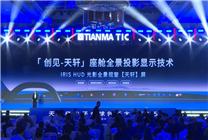LOFIC: The Next Generation of HDR Technology
Summary:
- LOFIC technology resolves ghosting and smear issues found in first-generation multi-frame HDR.
- Major smartphone manufacturers are set to incorporate LOFIC into flagship models by next year.
- This advanced technology aims to enhance the dynamic range of mobile photography significantly.
On October 10, industry blogger @DigitalChatStation shared crucial insights about LOFIC technology on Weibo, cementing its position as a leading advancement in high-dynamic range (HDR) imaging. This new approach not only mitigates the ghosting and smear challenges seen in earlier multi-frame HDR implementations, but it also boasts a dynamic range that surpasses that of second-generation DCG/DXG technologies.
Enhancing Mobile Photography
LOFIC (Lateral Overflow Integration Capacitors) represents a revolutionary leap in HDR imaging technology. By merging linear and logarithmic charge accommodation methods within a single CMOS pixel, LOFIC enables smartphones to capture images with far richer detail, especially in high-contrast scenes. This innovation allows for improved performance in varying lighting conditions, making it especially valuable for mobile photographers and content creators.
Adoption by Major Manufacturers
Leading smartphone manufacturers are taking note of LOFIC’s capabilities. According to recent reports, the top five mobile phone makers are planning to integrate this technology into their upcoming flagship devices. The Xiaomi 17 Pro series is expected to be among the first to adopt LOFIC, launching as part of its new generation later this year. Additionally, Huawei’s latest flagship will also feature this technology, with blue and green manufacturers also in the mix for upcoming iterations planned for release next year.
Reports indicate that Apple’s self-developed CMOS technology will incorporate LOFIC, although its implementation is projected for 2028. This staggered rollout highlights the significance of LOFIC as a competitive edge in mobile photography, and underscores the increasing demand for enhanced imaging capabilities in the smartphone market.
Addressing User Queries
In the discussion surrounding LOFIC, a user inquired about the specifics of the last generation of LOFIC, to which the blogger clarified that the OV50K should be regarded as the first generation. The Xiaomi Mi 17 Pro is set to debut as the first phone to incorporate the third generation of LOFIC technology, setting a new benchmark in mobile imaging.
Another query pertained to the adoption of LOFIC sensors in high-end imaging systems, with the blogger noting that currently, 2-3 major brands are evaluating LOFIC for their super-large camera systems. This suggests a growing trend towards adopting advanced technologies that push the envelope in photographic quality.
The Future of LOFIC
As LOFIC technology begins to permeate the smartphone industry, its potential to redefine mobile photography cannot be understated. The ability to capture high-dynamic range images without the typical pitfalls of ghosting and smearing positions LOFIC as a transformative player in how consumers perceive mobile photography.
With the impending launch of LOFIC-enabled devices, users can expect to see stunning improvements in image quality. This advancement speaks to the broader trend of technological integration in consumer devices, where innovations are rapidly becoming standard features that enhance user experience.
Conclusion
LOFIC technology marks a significant milestone in the evolution of HDR imaging for mobile devices. With major manufacturers, including Xiaomi and Huawei, investing in this technology, we can anticipate a future where mobile photography is more vibrant and detailed than ever. As the industry moves forward, LOFIC will likely play a pivotal role in shaping the next wave of smartphone innovations, pushing boundaries in what is achievable within mobile imaging.
In summary, LOFIC presents a promising avenue for tech enthusiasts and everyday users alike, opening up a world of possibilities for creating stunning visual content on mobile devices. Its adoption by notable manufacturers further solidifies its potential to revolutionize mobile photography for years to come.








